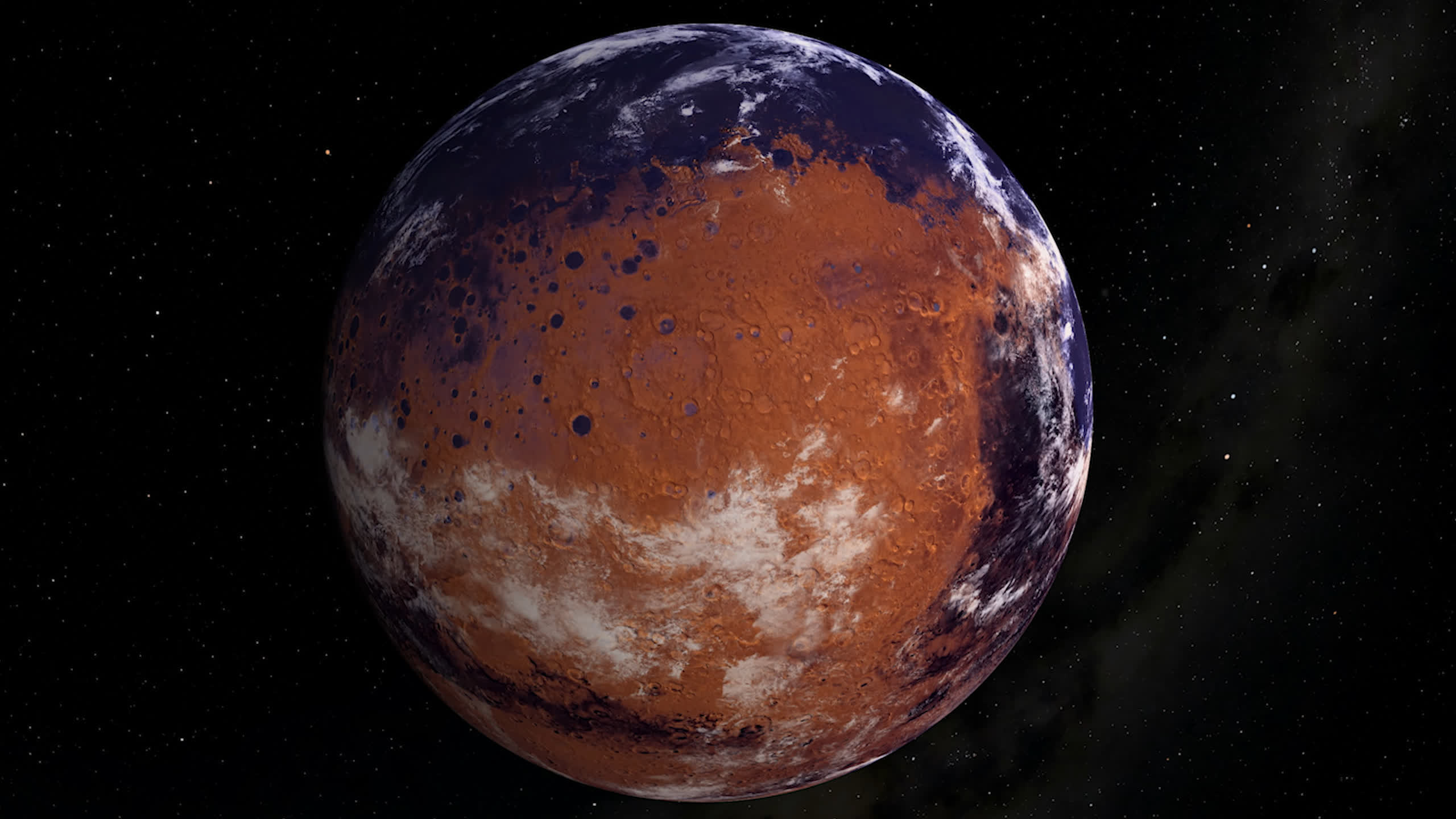The big picture: Solar wind is a stream of electromagnetically charged particles released from the upper atmosphere of the Sun, the corona, and it permeates every planet and cosmic object in the Solar System. When something changes in the amount of charged particles, unexpected and extreme atmospheric phenomena can be observed.
The Mars Atmosphere and Volatile Evolution (or Maven for short) spacecraft has been orbiting Mars since September 2014, with the task of studying how the planet lost its atmospheric gases throughout the eons. In December 2022, Maven witnessed an unexpected expansion phase of the Martian atmosphere.
The spacecraft detected a dramatic "disappearance" of the stream of charged particles making up the solar wind, NASA has now revealed. The phenomenon was created by a solar event so powerful that it created a "void" in its wake as it traveled through the entire Solar System.
Like any other planet in our little cosmic neighborhood, Mars is constantly immersed in the solar wind. The particle flux exerts pressure on the planet's magnetosphere and ionosphere, ultimately driving small chunks of the atmosphere away to outer space. The extreme solar event detected in December 2022 was caused by faster-moving solar wind particles overtaking slower moving solar wind, NASA explained.
The complex interaction between the two types of solar winds acted as a broom, sweeping and compressing the two regions together and creating a "rare void" of extremely low-density solar wind region in its wake. According to Maven's observations, the solar wind battering against Mars was essentially gone, and the planet's outermost regions reacted accordingly.
The density of the solar wind dropped by a factor of 100, causing a dramatic reduction in pressure against Mars' magnetosphere and ionosphere. The two regions of space surrounding the planet were thus able to expand by thousands of kilometers, more than triple their typical size.
The ionosphere showed other remarkable changes, going from its usual magnetized state to an unmagnetized one. Meanwhile, the layer between the solar wind and Mars' magnetosphere became "unusually electromagnetically quiet," NASA explained.
The extreme conditions observed in 2022 are "scientifically invaluable," Maven principal investigator Shannon Curry remarked, as they provide a way for scientists to see how Mars could behave if it were orbiting a less 'windy' star. The Red planet would be a very different world without the extreme pressure exerted by the solar wind, and Maven was specifically designed to study these types of interactions.
